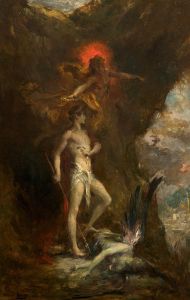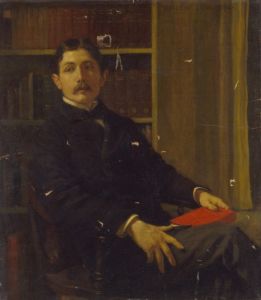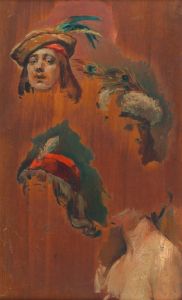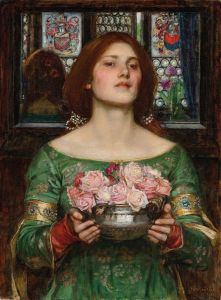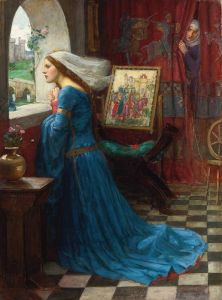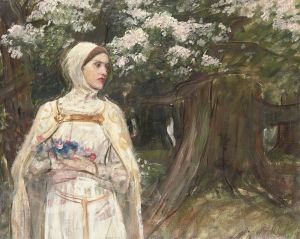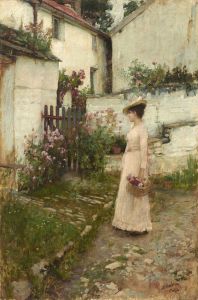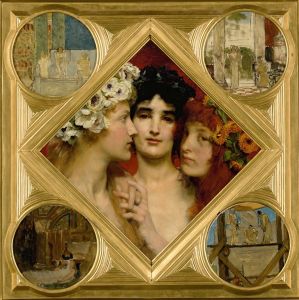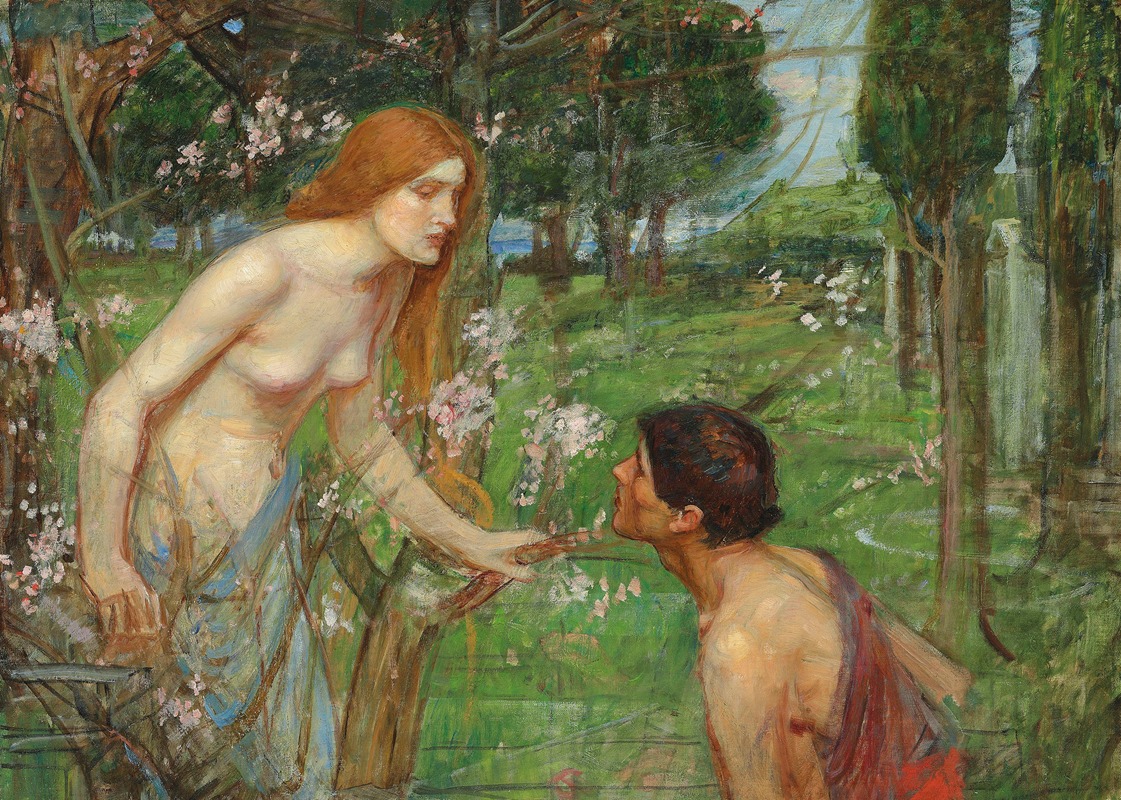
Study for ‘Phyllis and Demophoön’
A hand-painted replica of John William Waterhouse’s masterpiece Study for ‘Phyllis and Demophoön’, meticulously crafted by professional artists to capture the true essence of the original. Each piece is created with museum-quality canvas and rare mineral pigments, carefully painted by experienced artists with delicate brushstrokes and rich, layered colors to perfectly recreate the texture of the original artwork. Unlike machine-printed reproductions, this hand-painted version brings the painting to life, infused with the artist’s emotions and skill in every stroke. Whether for personal collection or home decoration, it instantly elevates the artistic atmosphere of any space.
"Study for ‘Phyllis and Demophoön’" is a work by the renowned British artist John William Waterhouse, who is best known for his Pre-Raphaelite style paintings. Waterhouse was active during the late 19th and early 20th centuries, and his works often depicted scenes from mythology, literature, and classical history, characterized by their romanticism and attention to detail.
The painting "Phyllis and Demophoön" is based on a story from Greek mythology. Phyllis was a Thracian princess who fell in love with Demophoön, the son of Theseus, during his return from the Trojan War. According to the myth, Demophoön promised to return to Phyllis after attending to matters in Athens, but he failed to keep his promise. Heartbroken, Phyllis ultimately transformed into an almond tree. The myth of Phyllis and Demophoön has been a popular subject in art and literature, symbolizing themes of love, betrayal, and transformation.
Waterhouse's study for this painting likely served as a preparatory work, where he explored composition, form, and the emotional dynamics between the characters. Studies are common in the artistic process, allowing artists to experiment with different elements before committing to a final piece. Waterhouse was known for his meticulous approach, often creating numerous sketches and studies to perfect his compositions.
The study would have been executed in a medium such as pencil, charcoal, or oil on canvas, typical of Waterhouse's preparatory works. These studies are valuable for understanding the artist's creative process and provide insight into his methods of developing complex narrative scenes. Waterhouse's ability to convey emotion and drama through his figures and settings is evident even in his preliminary works.
While the final version of "Phyllis and Demophoön" may not be as widely recognized as some of Waterhouse's other masterpieces, such as "The Lady of Shalott" or "Hylas and the Nymphs," it nonetheless reflects his enduring fascination with mythological themes and his skill in bringing these ancient stories to life through art. Waterhouse's work is celebrated for its lush, detailed style and its ability to capture the imagination of viewers, transporting them to the mythic past.
The study for "Phyllis and Demophoön" is part of Waterhouse's broader oeuvre, which continues to be studied and admired for its contribution to the Pre-Raphaelite movement and its influence on subsequent generations of artists. His works are held in numerous public and private collections, and they continue to be the subject of exhibitions and scholarly research, underscoring Waterhouse's lasting impact on the art world.






